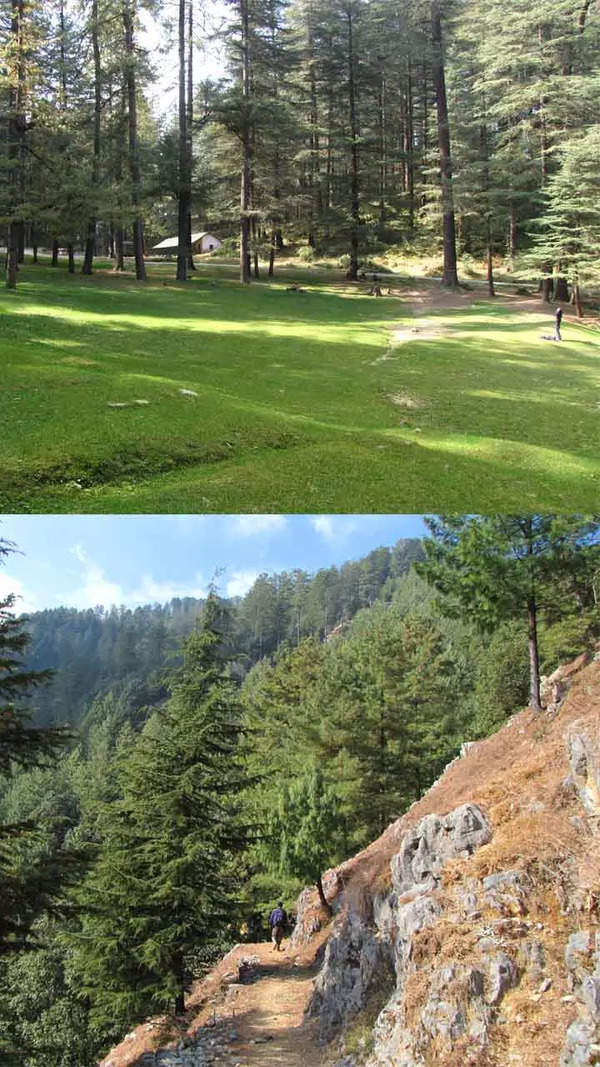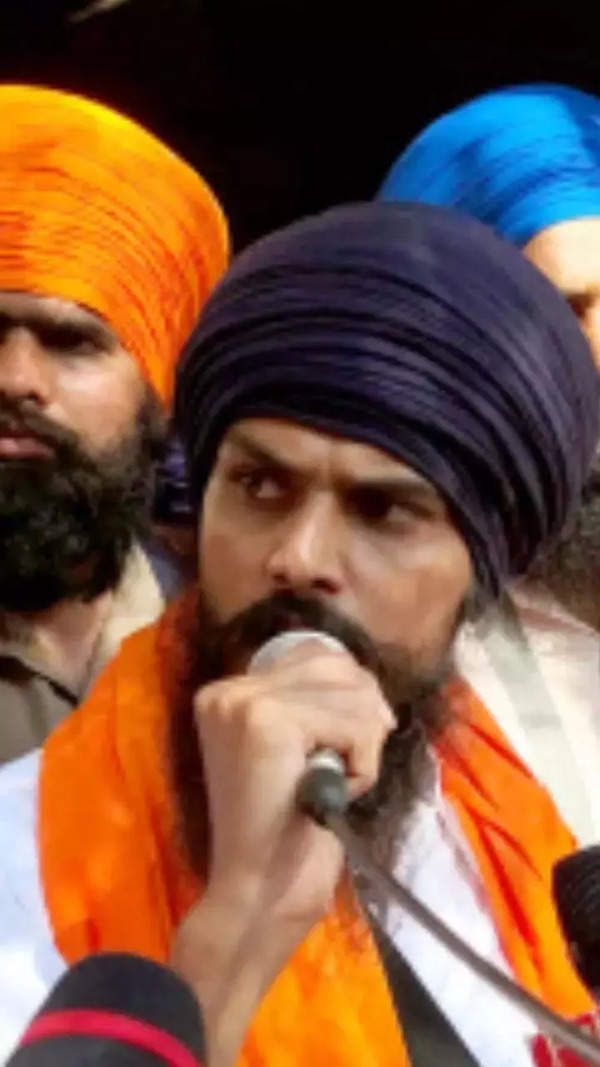- News
- India News
- Young talent to masters, BKC's grand culture centre to celebrate, nurture art
Trending Topics
Young talent to masters, BKC's grand culture centre to celebrate, nurture art

On the eve of the launch of the Nita Mukesh Ambani Cultural Centre at Bandra-Kurla Complex, Isha Ambani Piramal speaks to Namita Devidayal about the vision behind it and how it plans to celebrate both Indian and global talent.
Q: Besides its incredible scale, how does this arts centre differentiate itself from other such spaces in the city?
A: Over the years, my family, particularly my mother, has reimagined ways to protect, promote and sustain India's heritage, and make art and culture relevant to the younger generation. NMACC will provide a platform for emerging talent and also celebrate the masters. Our hope is for it to be democratic, yet aspirational. The rich diversity of programming as well as the diversity of audiences at our Centre will reflect this intent. I believe that's what sets it apart.
Q: The lotus seems to be a theme throughout the arts complex. What was the thought behind it?
A: While conceptualising the design philosophy, my mother and I were certain the inspiration must stem from India - its culture, aesthetics and people. The spaces have been structured as a tribute to India's rich heritage, reflected in recurring motifs of the lotus, the national flower, symbolising purity, beauty and prosperity. We have tried to interpret this traditional Indian motif as a global symbol of modernity.
Q: Do you have any plans to draw in young and emerging talent, especially from smaller towns? And is there an educational component to the Centre?
A: Yes. Along with bringing the best of India and the world on one global stage, our aim for the Centre is to groom emerging talent from across the nation. We plan to start residency programmes with maestros and experts and eventually uplift India's artistic community. We plan to introduce community-nurturing initiatives, including inter-school and inter-college competitions for art, music, dance and more.
Q: Tell us about the exhibition that unspools India's contribution to world fashion?
A: 'India in Fashion' is a costume art exhibition that will showcase India's everlasting impact on global fashion since the 18th century, and how some of the most iconic global brands have been inspired by our textiles. It makes me immensely proud to tell you that over 140 historic India-inspired costumes from around the world have been assembled for this exhibition which is curated by author and costume expert Hamish Bowles. The majestic set that will host this exhibition is every bit as magical as the art pieces it houses.
Q: Personally, what is your favourite part of the Centre?
A: We have been fortunate to work with a fantastic team- both Indian and global. It is difficult to pick a favourite when the entire Centre is so close to my heart, but if I had to, I would go with the Art House, just for how beautifully it blends in the city with the entire experience as the sunlight peers through the external facade and interacts with the art on display. On a personal note, my deepest wish is to support new and contemporary artists from around the world. I would like for people to be able to explore prominent names in international art, right here in India. In turn, Indian art is at an inflexion point-so many Indian artists have become global brands and fuelled a worldwide interest in our art.
Q: Can you describe the three different theatre spaces?
A: It's exciting to even just talk about these spaces! There's The Grand Theatre, a 2,000-seat space, designed specially with the aim of showcasing Broadway-style theatrical and epic musicals. Its very first production is the biggest musical that our country has ever seen, with a crew of over 800 people. Then there's The Studio Theatre, a 250-seat, flexible space with some cutting-edge features which would alter your viewing experience of folk, fusion or classical music and dance performances, or regional theatre. The Cube, a 125-seater, is what you will call small but mighty. With features like a moveable stage and seating, this is where you can come for out-of-the-box performances in music, dance and theatre, or to catch the coolest Indie gigs.
Q: Besides its incredible scale, how does this arts centre differentiate itself from other such spaces in the city?
A: Over the years, my family, particularly my mother, has reimagined ways to protect, promote and sustain India's heritage, and make art and culture relevant to the younger generation. NMACC will provide a platform for emerging talent and also celebrate the masters. Our hope is for it to be democratic, yet aspirational. The rich diversity of programming as well as the diversity of audiences at our Centre will reflect this intent. I believe that's what sets it apart.
Q: The lotus seems to be a theme throughout the arts complex. What was the thought behind it?
A: While conceptualising the design philosophy, my mother and I were certain the inspiration must stem from India - its culture, aesthetics and people. The spaces have been structured as a tribute to India's rich heritage, reflected in recurring motifs of the lotus, the national flower, symbolising purity, beauty and prosperity. We have tried to interpret this traditional Indian motif as a global symbol of modernity.
Q: Do you have any plans to draw in young and emerging talent, especially from smaller towns? And is there an educational component to the Centre?
A: Yes. Along with bringing the best of India and the world on one global stage, our aim for the Centre is to groom emerging talent from across the nation. We plan to start residency programmes with maestros and experts and eventually uplift India's artistic community. We plan to introduce community-nurturing initiatives, including inter-school and inter-college competitions for art, music, dance and more.
Q: Tell us about the exhibition that unspools India's contribution to world fashion?
A: 'India in Fashion' is a costume art exhibition that will showcase India's everlasting impact on global fashion since the 18th century, and how some of the most iconic global brands have been inspired by our textiles. It makes me immensely proud to tell you that over 140 historic India-inspired costumes from around the world have been assembled for this exhibition which is curated by author and costume expert Hamish Bowles. The majestic set that will host this exhibition is every bit as magical as the art pieces it houses.
Q: Personally, what is your favourite part of the Centre?
A: We have been fortunate to work with a fantastic team- both Indian and global. It is difficult to pick a favourite when the entire Centre is so close to my heart, but if I had to, I would go with the Art House, just for how beautifully it blends in the city with the entire experience as the sunlight peers through the external facade and interacts with the art on display. On a personal note, my deepest wish is to support new and contemporary artists from around the world. I would like for people to be able to explore prominent names in international art, right here in India. In turn, Indian art is at an inflexion point-so many Indian artists have become global brands and fuelled a worldwide interest in our art.
Q: Can you describe the three different theatre spaces?
A: It's exciting to even just talk about these spaces! There's The Grand Theatre, a 2,000-seat space, designed specially with the aim of showcasing Broadway-style theatrical and epic musicals. Its very first production is the biggest musical that our country has ever seen, with a crew of over 800 people. Then there's The Studio Theatre, a 250-seat, flexible space with some cutting-edge features which would alter your viewing experience of folk, fusion or classical music and dance performances, or regional theatre. The Cube, a 125-seater, is what you will call small but mighty. With features like a moveable stage and seating, this is where you can come for out-of-the-box performances in music, dance and theatre, or to catch the coolest Indie gigs.
Start a Conversation
FOLLOW US ON SOCIAL MEDIA
FacebookTwitterInstagramKOO APPYOUTUBE










